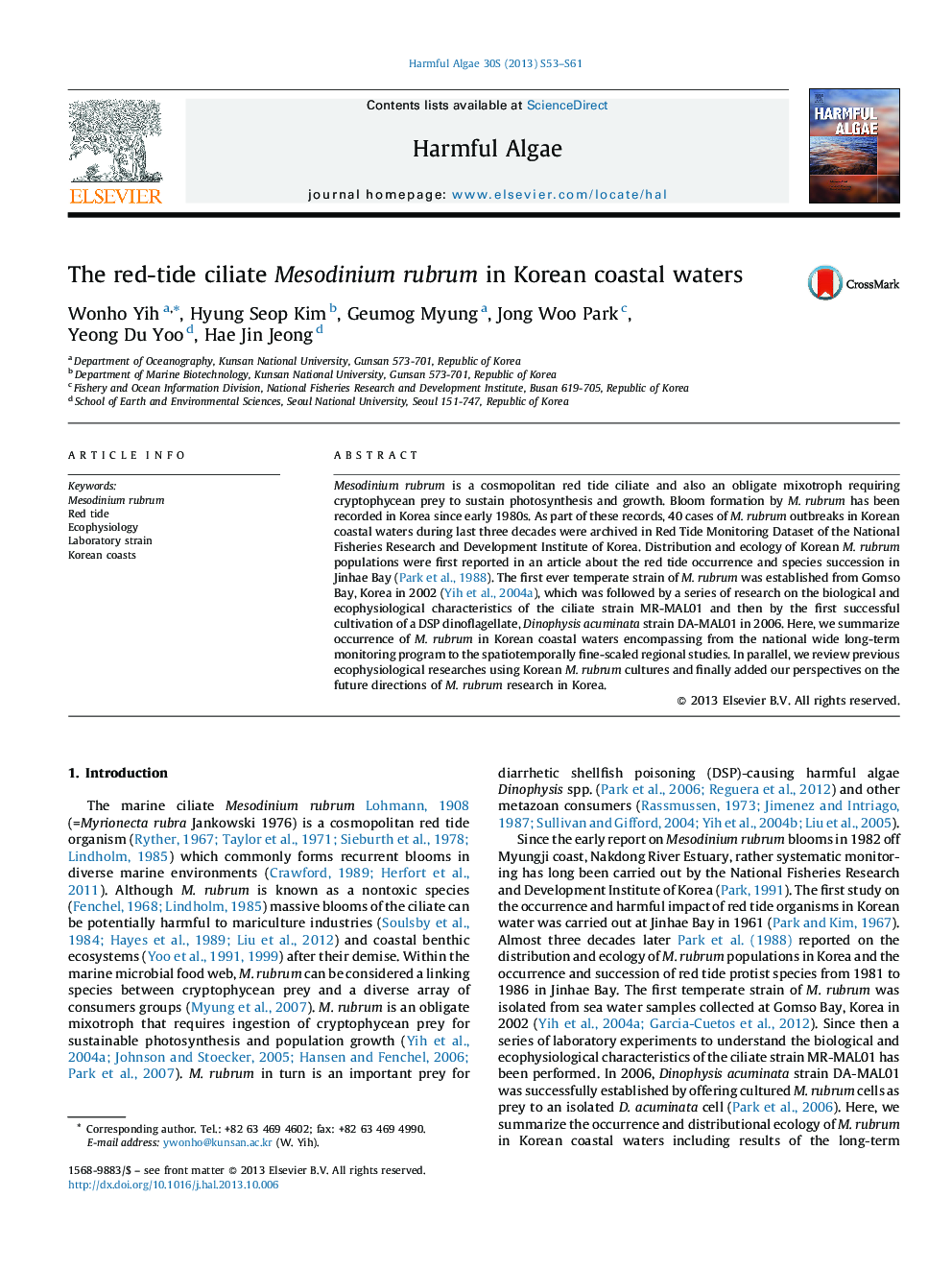| Article ID | Journal | Published Year | Pages | File Type |
|---|---|---|---|---|
| 4545424 | Harmful Algae | 2013 | 9 Pages |
•We report distribution and seasonality of Mesodinium rubrum population in Korean coastal waters.•We summarized occurrence of M. rubrum in Korean coastal waters encompassing from the national wide long-term monitoring program to the spatiotemporally fine-scaled regional studies.•In parallel, we reviewed previous ecophysiological researches using Korean M. rubrum cultures and finally added our perspectives on the future directions of M. rubrum researches in Korea.
Mesodinium rubrum is a cosmopolitan red tide ciliate and also an obligate mixotroph requiring cryptophycean prey to sustain photosynthesis and growth. Bloom formation by M. rubrum has been recorded in Korea since early 1980s. As part of these records, 40 cases of M. rubrum outbreaks in Korean coastal waters during last three decades were archived in Red Tide Monitoring Dataset of the National Fisheries Research and Development Institute of Korea. Distribution and ecology of Korean M. rubrum populations were first reported in an article about the red tide occurrence and species succession in Jinhae Bay ( Park et al., 1988). The first ever temperate strain of M. rubrum was established from Gomso Bay, Korea in 2002 ( Yih et al., 2004a), which was followed by a series of research on the biological and ecophysiological characteristics of the ciliate strain MR-MAL01 and then by the first successful cultivation of a DSP dinoflagellate, Dinophysis acuminata strain DA-MAL01 in 2006. Here, we summarize occurrence of M. rubrum in Korean coastal waters encompassing from the national wide long-term monitoring program to the spatiotemporally fine-scaled regional studies. In parallel, we review previous ecophysiological researches using Korean M. rubrum cultures and finally added our perspectives on the future directions of M. rubrum research in Korea.
